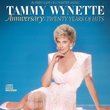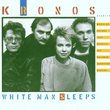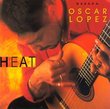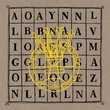| All Artists: Daniel Binelli Title: Tango Members Wishing: 0 Total Copies: 0 Label: Black Sun Records Original Release Date: 4/4/1996 Re-Release Date: 2/8/1996 Genres: International Music, Pop, Latin Music Styles: Latin Music, Tango Number of Discs: 1 SwapaCD Credits: 1 UPC: 013711502022 |
Search - Daniel Binelli :: Tango
 | Daniel Binelli Tango Genres: International Music, Pop, Latin Music
Tango! The Latin American ballroom dance usually comes to mind when you hear this word pictured with expressive emotions. What about the music and rhythm that inspired this dance style centuries ago?Originating in Bueno... more » |
Larger Image |
CD Details
Synopsis
Album Description
Tango! The Latin American ballroom dance usually comes to mind when you hear this word pictured with expressive emotions. What about the music and rhythm that inspired this dance style centuries ago?Originating in Buenos Aires, Argentina, the tango can be traced back to the seventeenth century with evident influences from the havanera, tango andaluz, and milonga (creole/gaucho dance) and candombe (African-Argentine music) contributing to the early rhythmic development.Early in the nineteenth century, European immigrations to Argentina greatly influenced the music and dance of the tango. The sad lyrics of early tangos reflect this. Tango music has since been influenced by other waves of music from Europe and the United States. Astor Piazolla, toward the end of his life, brought jazz elements into the tango.Today, Argentine tango music is largely identified with the bandoneon - a portable accordion with buttons (instead of keys). However, until the early 1920s the bandoneon was not a frequent or obvious instrument in the tango bands. The primary instruments were the guitar, drum and flute. The use of aluminum frames allowed the bandoneon to be even lighter, and more importantly, much louder.Producer, composer and percussionist Michael Askill introduces listeners to the history of the tango recorded in its birthplace, Buenos Aires, Argentina. Daniel Binelli and the Daniel Binelli Septeto interpret this history, including the influences of the European and African cultures, traditional and new tango, tragic and nostalgic tango, and the celebrations and romantic passions.
Similarly Requested CDs
| Concrete Blonde Bloodletting Genres: Alternative Rock, Pop, Rock Label: Capitol | |
| Tammy Wynette Anniversary: 20 Years of Hits Genres: Country, Pop, Rock Label: Sony | |
| Kronos Quartet, Charles Ives, Jon Hassell White Man Sleeps Genres: Jazz, Special Interest, Classical Label: Nonesuch | |
| Abbey Lincoln Turtle's Dream Genres: Jazz, Pop, Broadway & Vocalists Label: Polygram Records | |
| Oscar Lopez Heat Genres: Folk, International Music, Jazz, New Age, Pop, Latin Music Label: Narada | |
| Bright Eyes Four Winds Genres: Alternative Rock, Folk, Pop, Rock Label: Saddle Creek | |

 Track Listings (11) - Disc #1
Track Listings (11) - Disc #1





